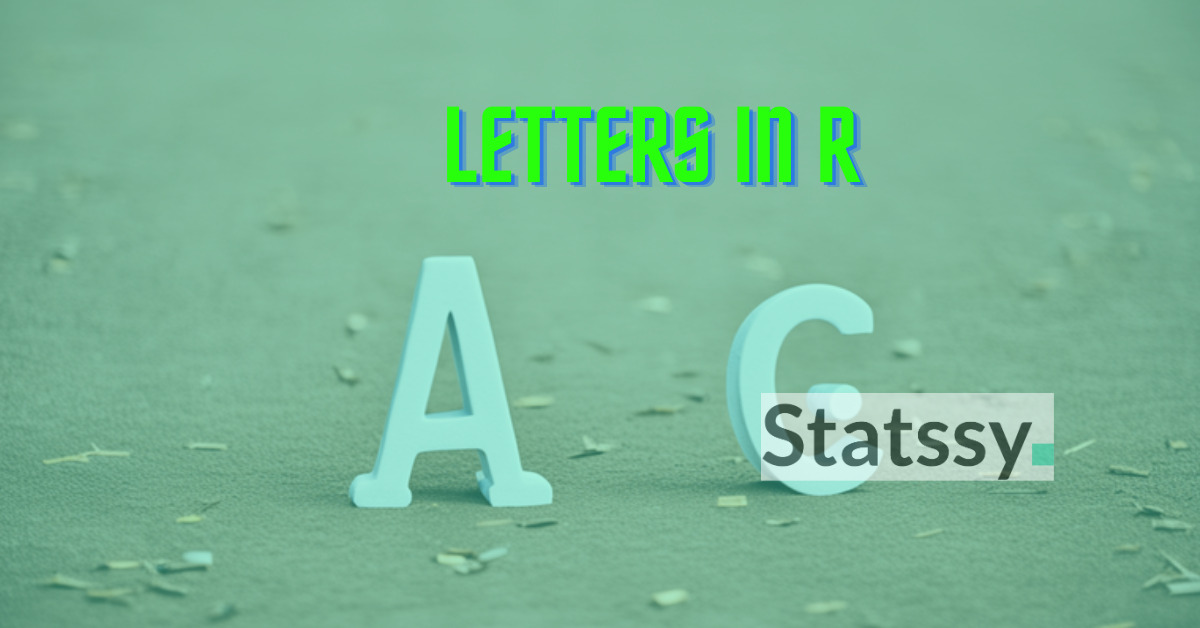Welcome to the vibrant world of R programming, where one can find hidden gems even in the simplest of features. Among those are two intriguing constants: LETTERS and letters. These variables contain the uppercase and lowercase English alphabet, respectively, and their applications are vast. Let’s explore them one by one.
Table of Contents
The journey we’re embarking on will explore the following stops:
- Using LETTERS to label parts of a plot
- Naming data frames and matrices with LETTERS
- Creating variables with LETTERS
- Using LETTERS for unique category generation
- Subsetting data with LETTERS
- LETTERS for loop indexing
- Generating dummy data with LETTERS
- Creating named lists with LETTERS
- Manipulating strings with LETTERS
- Labeling factor levels with LETTERS
Using LETTERS to Dress Up Your Plots
In R, plots are a great way to visualize your data, and you can make these plots more informative by adding labels. LETTERS and letters can be used to label different points in a plot. Check out this example:Mastering the Alphabet: A Comprehensive Guide to Using LETTERS in R Programming 2024
plot(1:26, 1:26, xlab = "LETTERS", ylab = "Numbers", main = "Example Plot",
type = "n")
text(1:26, 1:26, labels = LETTERS, cex = 0.7)
Here, we’ve used LETTERS to label points in a scatter plot. The result is a plot that’s more meaningful and easier to understand.
Arranging Data Frames and Matrices with LETTERS
Data frames and matrices can hold a lot of data, and to keep it organized, we can name the columns or rows. LETTERS and letters can be used to do this quickly:
df <- data.frame(matrix(runif(26*5), ncol=5)) colnames(df) <- LETTERS[1:5]
This simple code assigns column names to a data frame. The result is a tidier data set that’s easier to navigate.
Creating Variables and Categories with LETTERS
R makes it easy to create variables and categories. If you want to quickly generate a variable, you can use LETTERS and letters. Here’s an example:
factor_variable <- factor(sample(LETTERS[1:5], 100, replace = TRUE))
In this code, we’ve created a variable with categories labeled by the first five letters of the English alphabet. This technique can be handy when you need to quickly create a variable for testing or demonstration purposes.
Mastering the Alphabet: A Comprehensive Guide to Using LETTERS in R Programming 2024
Subsetting Data and Looping with LETTERS
Subsetting data is a common task in data analysis, and LETTERS and letters can help when your data frame’s row or column names are letters:
subset_df <- df[, c("A", "B", "C")]
This code creates a new data frame that only includes the columns “A”, “B”, and “C” from our original data frame.
In R, loops are used to repeat specific actions, and LETTERS and letters can be used as the counter in these loops:
for (i in LETTERS[1:5]) {
print(i)
}
This simple for loop prints the first five letters of the English alphabet.
Creating Dummy Data and Named Lists with LETTERS
For testing or demonstrating functions, you often need to create dummy data. LETTERS and letters can be used to do this:
dummy_data <- data.frame(Category = sample(LETTERS[1:3
], 100, replace = TRUE),
Value = rnorm(100))
In this case, we’ve created a data frame with a column of random categories represented by the first three letters of the English alphabet.
You can also use LETTERS and letters to create named lists:
named_list <- setNames(as.list(1:26), LETTERS)
This code creates a list where each item is named after a letter from the English alphabet.
LETTERS for String Manipulation and Factor Level Labeling
When you’re working with text data, you might need to change parts of the text. LETTERS and letters can be used to substitute, match, and split strings:
# Substitute all 'A's in a string
gsub("A", "X", c(LETTERS, letters))
This code replaces all occurrences of the letter ‘A’ in a string with the letter ‘X’.
In R, you can also use LETTERS or letters to label the levels in factor variables:
levels_factor <- as.factor(sample(1:3, 100, replace = TRUE)) levels(levels_factor) <- LETTERS[1:3]
This code changes the levels of a factor variable from numbers to letters.
Wrapping Up : Mastering the Alphabet
As you can see, LETTERS and letters in R aren’t just collections of the English alphabet. They can be used in a multitude of ways to simplify and enhance your code. From plotting to data manipulation to string operations, these constants offer an array of useful tools for your R programming needs. Don’t forget to give them a try! Mastering the Alphabet: A Comprehensive Guide to Using LETTERS in R Programming
Looking to further know about R programming? I’m here to help. With a strong command of data manipulation, analysis, and visualization in R, I offer personalized guidance catered to your needs. Let’s turn your data into powerful insights together. Reach out to me today!





